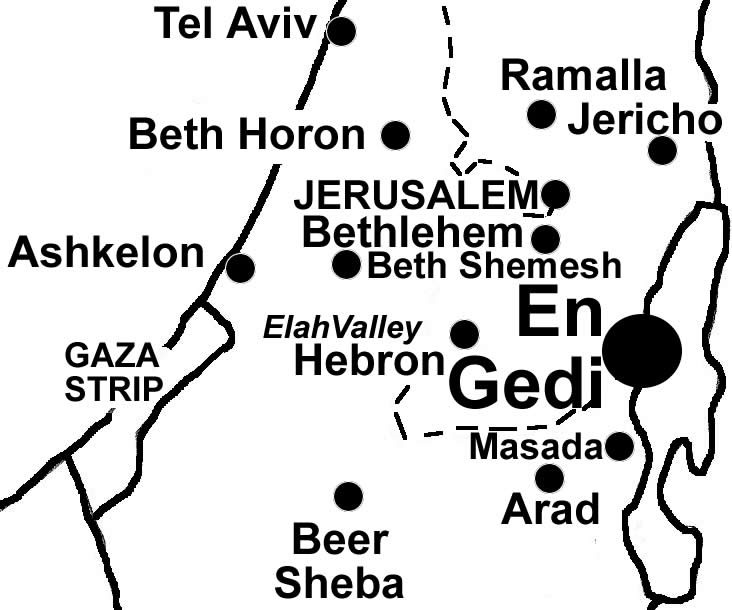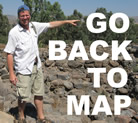This is water running from the natural springs upstream at En Gedi.
In First Samuel David continued to flee from Saul. David went from one hiding place in Judah to another. In First Samuel 24:1 it says, "After Saul returned from pursuing the Philistines, he was told, 'David is in the Desert of En Gedi." This is the location that David end up hiding in a cave that Saul was also using.
|
 |
In the Bible:
Joshua 15:62, En Gedi allotted to Judah;
1 Sam. 23:29, David hid in a cave at En Gedi;
1 Sam. 24, Saul ‘relieved’ himself in a cave at En Gedi and David snuck in and cut his garment;
Ps. 57 and 142, David may have written these two Psalms at En Gedi;
Song of Solomon 1:14, the woman compares her beloved to a cluster of henna blossoms from En Gedi;
Ezekiel 47:10, fishermen will line the Dead Sea shore from En Gedi to En Eglaim in the future |
 |
En Gedi is an oasis in the Judean Wilderness on the shore of the Dead Sea. En Gedi means “spring of the wild goats.” It has a warm climate, abundant water supply, fragrant vegetation, date palm trees and several water falls. En Gedi is a fresh water spring (one of two in the area) even though it is on the coast of the Dead Sea.
Due to its temperate climate and fresh water supply En Gedi has always attracted settlements. The earliest is from the Chalcolithic Period (4000 BC). A temple from that time has been discovered. A cave of treasure from this time period was found 6 miles south in the Nahal Mishmar. It is believed that these copper articles came from this Chalcolithic temple in En Gedi. |


